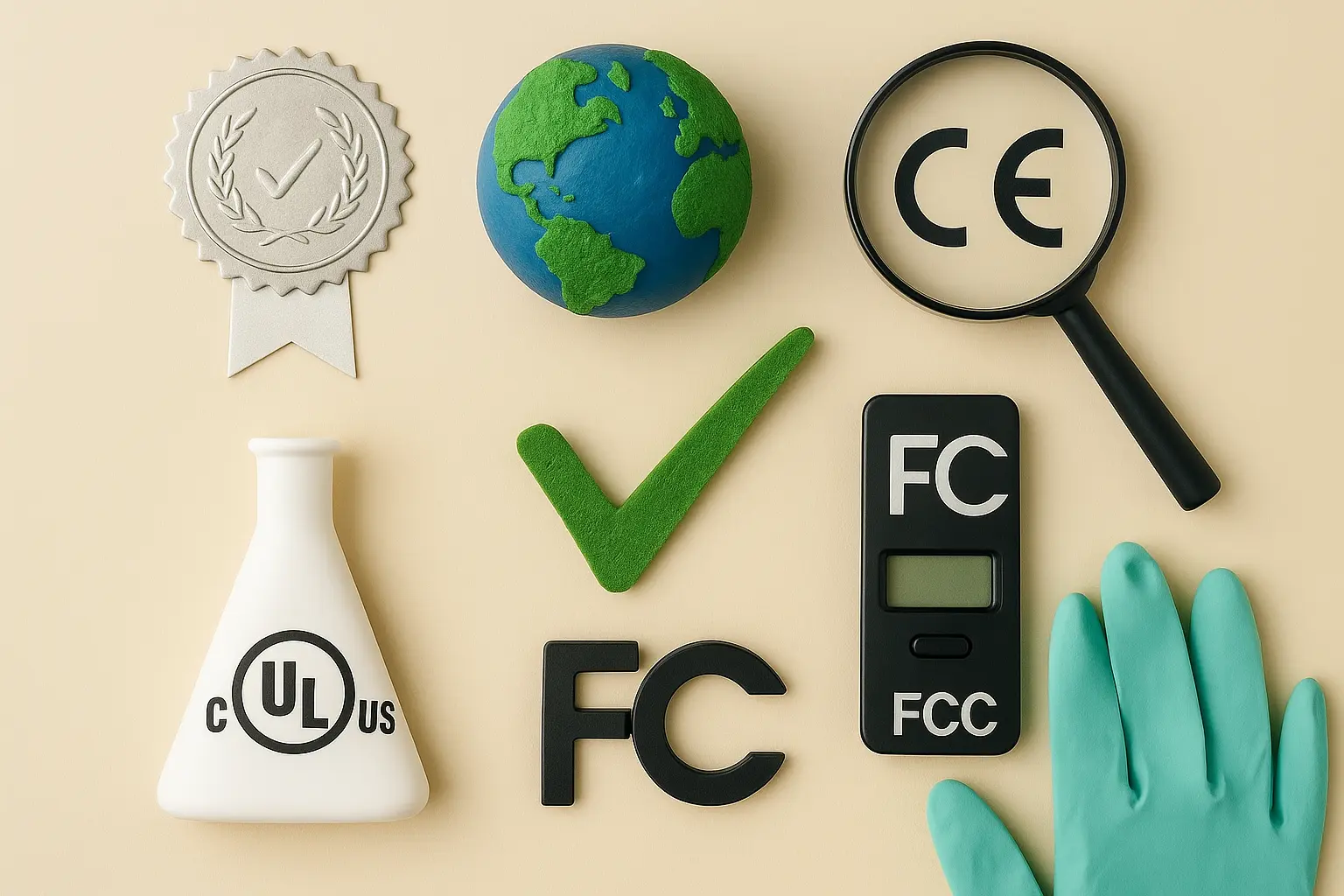E-Mark Certification
The E-Mark certification is a European conformity mark that must be applied to certain products before they can be sold within the European Economic Area (EEA). This certification ensures that products comply with the essential requirements set out in relevant EC Directives, thereby ensuring safety and performance. For automotive components, such as lighting systems, windshields, tires, and seat belts, E-Mark compliance is mandatory.
Obtaining this certification involves rigorous testing by an accredited laboratory to verify that the product meets all specified standards. The process can be complex due to its stringent requirements, but it ensures a high level of quality and safety for consumers across Europe. Compliance officers, R&D engineers, and quality managers must ensure their products meet these standards to avoid costly delays or even market entry bans.
The certification is recognized by all EEA countries, ensuring that products can be sold freely throughout the region without additional testing in each country. This reduces administrative burdens for manufacturers while maintaining high safety standards. The process typically involves:
- Product design review
- Type testing (compliance with relevant EC Directives)
- Application of the E-Mark on the product or its packaging
- Issuance of a Declaration of Conformity
The type testing is performed by an accredited laboratory that verifies compliance with European standards. This process is critical to ensure that products meet all safety and performance requirements before they reach the market.
In this article, we will delve into the details of how E-Mark certification is obtained, the specific tests involved, and the importance of compliance for manufacturers operating in the EEA.
Applied Standards
| Standard | Description |
|---|---|
| EC Directive 70/156/EEC | Defines the essential requirements for products to be placed on the EEA market. |
| UN-ECE Regulation No. 48, 49, and 54 | Covering vehicle lamps, reflectors, and their mounting systems; these regulations ensure that lighting components meet safety standards for both daytime and nighttime driving conditions. |
| UN-ECE Regulation No. 100 | Regulates tire speed ratings, marking, and labeling to ensure consumer awareness of tire performance characteristics. |
| UN-ECE Regulation No. 95 | Covers seat belts, ensuring that they meet safety standards for both occupants' protection during a crash and ease of use in everyday operation. |
The application of these standards ensures that products are safe and reliable, meeting the stringent requirements set by European law. The testing process is comprehensive and covers various aspects of product performance, including durability, reliability, and safety under real-world conditions.
It is crucial for manufacturers to understand and adhere strictly to these standards during the design and manufacturing stages. This ensures that products are not only compliant but also perform optimally in all intended applications. The testing process typically involves:
- Visual inspection of the product
- Type testing according to relevant UN-ECE Regulations
- Application of the E-Mark on the product or packaging
- Issuance of a Declaration of Conformity
The laboratory plays a critical role in ensuring that products meet all necessary standards. By adhering to these regulations, manufacturers can ensure their products are safe and reliable for consumers across Europe.
International Acceptance and Recognition
- All EEA countries recognize the E-Mark certification without the need for additional testing.
- The certification is also recognized by numerous non-EEA countries, including Turkey and Switzerland, further enhancing its global significance.
- Products with an E-Mark can be exported to these markets without undergoing further conformity assessments, streamlining international trade.
The widespread recognition of the E-Mark certification ensures that manufacturers can confidently sell their products in a large number of countries. This reduces the need for additional testing and certification processes in each market, saving time and resources. The acceptance of this certification by so many countries underscores its importance as a symbol of product quality and safety.
For manufacturers operating internationally, obtaining E-Mark certification is not only a requirement but also an advantage, as it opens up access to numerous markets with minimal additional effort. This global recognition enhances brand reputation and customer trust, contributing to the overall success of the business.
Use Cases and Application Examples
E-Mark certification is essential for manufacturers producing automotive components that are subject to European regulations. Some common applications include:
- Lights: Headlights, tail lights, brake lights, turn signals, etc.
- Tires: Ensuring proper speed rating and marking for consumer safety.
- Seat Belts: Providing reliable restraint systems that meet stringent safety standards.
The certification process involves several key steps:
- Type Testing: This is conducted by an accredited laboratory to verify compliance with relevant UN-ECE Regulations. The testing includes both functional and performance tests to ensure the product meets all safety and performance requirements.
- E-Marking: Once type testing is successful, the E-Mark can be applied to the product or its packaging. This mark must be clearly visible and legible for inspection by authorities.
- Declaration of Conformity: This document certifies that the product complies with all applicable EC Directives and Regulations. It serves as proof of compliance, which is essential for market entry.
In addition to these steps, manufacturers must ensure that their products are designed and manufactured in accordance with European standards throughout the production process. This includes proper material selection, manufacturing techniques, and quality control measures. By adhering to these guidelines, manufacturers can produce high-quality products that meet all necessary requirements.
The use of E-Mark certification is not limited to automotive components but extends to other transport-related products such as trailers, motorcycles, and bicycles. The testing process for these products follows similar procedures, ensuring consistent quality across different sectors.





